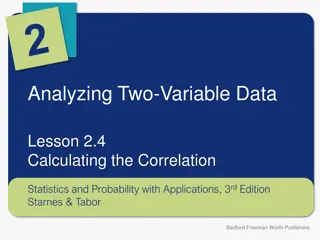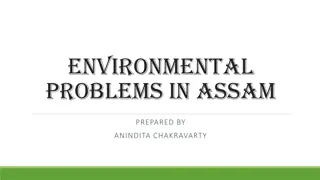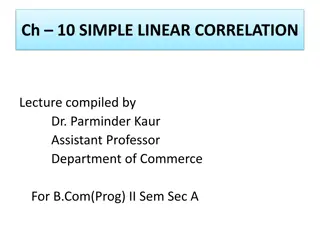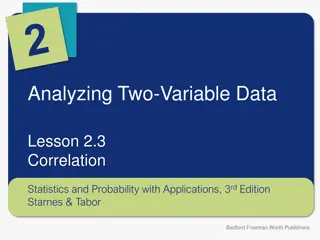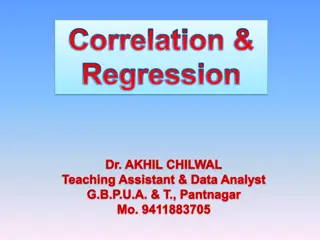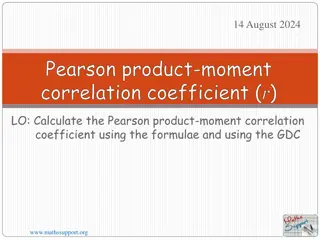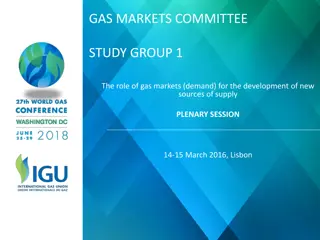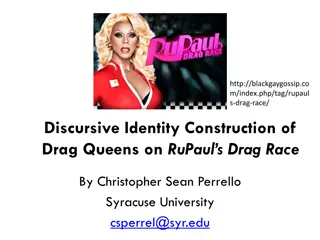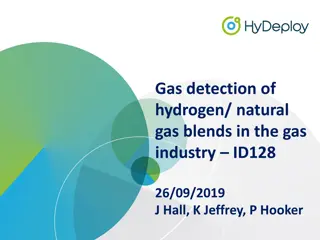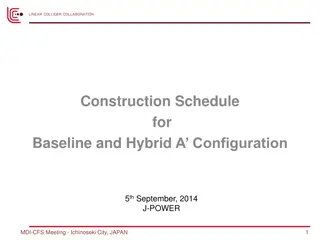Baseline Drag Force Correlation in Gas-Solid Systems
Study on drag force correlations for CFD simulations in gas-solid systems, exploring particle dynamics affected by hydrodynamics, morphology, and agglomerative phenomena. Models proposed to satisfy close-pack and single-particle extremes.
Download Presentation

Please find below an Image/Link to download the presentation.
The content on the website is provided AS IS for your information and personal use only. It may not be sold, licensed, or shared on other websites without obtaining consent from the author.If you encounter any issues during the download, it is possible that the publisher has removed the file from their server.
You are allowed to download the files provided on this website for personal or commercial use, subject to the condition that they are used lawfully. All files are the property of their respective owners.
The content on the website is provided AS IS for your information and personal use only. It may not be sold, licensed, or shared on other websites without obtaining consent from the author.
E N D
Presentation Transcript
A Baseline Drag Force Correlation for CFD Simulations of Gas-Solid Systems James M. Parker CPFD Software, LLC 2016 NETL Workshop on Multiphase Flow Science August 9 10, 2016 Morgantown, WV 1 Barracuda Virtual Reactor, Barracuda VR, Barracuda and CPFD are registered trademarks of CPFD Software, LLC
Particle Drag Force in Gas-Solid Systems Momentum exchange between fluid and collection of particles is affected by hydrodynamics: Reynolds number Voidage As well as particle-level phenomena Particle shape Morphology Static electricity Van der Waals forces Liquid films Appears as a deviation from ideal fluidization (particulate) 2
Effect on CFD Modeling of Gas-Solid Systems Agglomerative phenomena may not be calculated or characterized but is evident in operational data Available operational or experimental data used to improve CFD model Particle drag force models are needed that can be calibrated to account for the effect that agglomerative effects have on particle drag as a deviation from an ideal baseline drag ,Re, ) = ,Re, ) ,Re, ) F ( ideal F ( f ( p Ideal drag Deviation 3
Particle Drag Force Map Known Less known Known SINGLE PARTICLE CLOSE PACK FLUIDIZATION RANGE F(Re, ) Re Re 0 = = 1 Voidage Voidage ( ( ) ) mf 4
Dimensionless Particle Drag Force ( ) = ,Re, = = drag F Stokes F F Stokes F 3 d U Re d U p f p f Dimensionless Close pack or minimum fluidization (Ergun s) 2 1 a b R e ( = ( = + F ,Re, ) F ,Re, ) mf p mf mf mf 2 2 1 8 18 mf mf Single particle (Schiller-Naumann correlation) + 0.687 1 0.15Re 0.44Re 24 Re 1000 = = F ,Re) (1 F (Re) p sp Re 1000 5
Correlation for Baseline Particle Drag Model Requirements: Satisfy both close pack and single particle extremes Continuous function of voidage Popular models do not satisfy these requirements Wen and Yu does not satisfy close pack Ergun does not satisfy single particle drag Wen-Yu/Ergun Blend (Gidaspow) is discontinuous at = 0.8 Two different forms (A & B) which meet these requirements are proposed and tested against experimental data 6
New drag forms for particulate fluidization Form A: A Wen-Yu form (power of voidage) is used with an exponent that is adjusted to match Ergun s drag for all Re at minimum fluidization ( ) ( ) ln F (Re) / n F Re ( ) mf sp ,Re) = = F ( F Re ( ) p sp l mf The expression can be further simplified by rearrangement ln n ( ) ,Re) = = 1 F ( F Re F 1 Form A p sp mf l mf 8
New drag forms for particulate fluidization Form B: It was observed by Leva (1959) that the Ergun s model is applicable up to voidages of 0.8 and this same cutoff is commonly used in the Gidaspow Wen-Yu / Ergun blend. Logarithmic interpolation between Ergun s drag and the Schiller-Naumann drag reproduces this observation well ( ) ,Re) = ( , = 1 F ( F Re F Re ) mf Form B p sp mf 1 mf 9
Validation against experimental data Particulate fluidization data used for validation (177 points) Wen and Yu (1966): Bed expansion data for 191 & 500 micron glass balls in water Liu, Kwauk, and Li (1996): Bed expansion data for 54 micron FCC catalyst in supercritical CO2 (8 and 9.4 MPa) Jottrand (1952): Bed expansion data for 20, 29, 43, 61, 86, and 113 micron sand in water Wilhelm and Kwauk (1948): Bed expansion data for 373, 556, and 1000 micron sea sand in water Lewis, Gilliland, and Bauer (1949): Settling of 100 and 150 micron glass in water 10
Analysis Approach Bed expansion is generally comprised of data showing Superficial velocity Bed height or voidage Pressure drop Non-dimensional drag is related to the Archimedes number in a fluidized bed (di Felice, 1994) ( ) 3 d g p f s f ( ,Re) = = meas F Ar Ar 2 18Re f Particle sphericity is estimated from close pack pressure drop data where possible using Ergun coefficients recommended by Macdonald et al (1979) of a = 180 and b = 1.8. 11
Error Analysis of different drag models Drag Model Error Ergun Coeffs Form A 11.9% a = 180, b = 1.8 Ergun* 20.5% a = 180, b = 1.8 Gidaspow* 23.1% a = 150, b = 1.75 Wen and Yu 26.0% Ergun* 26.1% a = 150, b = 1.75 Form B 28.0% a = 180, b = 1.8 Ergun 64.2% a = 180, b = 1.8 * Sphericity is assumed = 1, as is common practice for these models meas F F 1 N N = Average error corr meas F = i 1 i 12
Particulate Drag Error dependence on Re and Voidage Close Pack Single Particle 15
Comparison of Form A with expression of di Felice The analysis of di Felice (1994) found a Reynolds number dependence for the exponent and proposed the following expression: ( ) 2 1.5 log 2 Re = 3.7 0.6 5 e x p The di Felice expression does not explicitly guarantee close-pack drag but the shape is similar 16
Conclusions CFD modeling of gas-solid systems can benefit from calibration of drag models to account for particle-level phenomena that affect particle drag For this effort, it is convenient to look at deviations from an ideal baseline drag model Two models for a baseline drag model were proposed and validated against available experimental data for particulate fluidization from literature Form A was found to match experimental data with an average error that was nearly half (11.9%) of the next best model tested This form is recommended as a baseline model for future work studying deviations in drag force due to agglomerative effects 17
References Di Felice, R (1994). The Voidage Function for Fluid-Particle Interaction Systems. International Journal of Multiphase Flow, 20(1):153. Leva, M (1959). Fluidization. McGraw-Hill Book Company, Inc., New York. Lewis, W., Gilliland, E., and Bauer, W. (1949). Characteristics of Fluidized Particles. Industrial and Engineering Chemistry, 41(6): 1104. Liu, D., Kwauk, M., and Li, H. (1996). Aggregative and Particulate Fluidization The Two Extremes of a Continuous Spectrum. Chemical Engineering Science, 51(17): 4045. Jottrand, R. (1952). An Experimental Study of the Mechanism of Fluidization. Journal of Applied Chemistry, Supplementary Issue 1: S17. Macdonald, I., El-Sayed, M., Mow, K., and Dullien, F. (1979) Flow through Porous Media-the Ergun Equation Revisited. Ind. Eng. Chem. Fundam., 18 (3): 199 Wen, C. and Yu, Y. (1966). Mechanics of Fluidization. Chemical Engineering Progress Symposium Series, 62(62): 100 Wilhelm, R. and Kwauk, M. (1948). Fluidization of Solid Particles. Chemical Engineering Progress, 44(3): 201. 18





